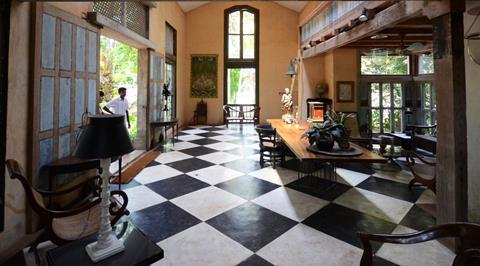Geoffrey Bawa’s house in Sri Lanka is chosen as the last destination for our grand tour of the world’s most sustainable buildings

If Cliff Richard had been a sustainability consultant this is the summer holiday he would have taken. A grand tour of the world’s most sustainable buildings where the sun not only shines brightly but glints from photovoltaic panels, and where the sea is blue, perhaps partly because all the grey water in the nearby town is being recycled.
Both the UK and the rest of the world have a lot to offer the sustainability tourist from the Co-op headquarters’ sparkling glass facade in Manchester to the bees on the roof of Le Hive in Paris. Leading industry figures have picked the buildings they think should inspire our efforts towards zero carbon.
The buildings we’ve visited so far on the grand tour have been the London 2012 velodrome, Le Hive in Paris, Bournville Village in Birmingham, the Co-op HQ in Manchester and the Brooklyn Botanic Gardens Visitor Center, New York. The last stop on the tour takes us to Colombo in Sri Lanka
Geoffrey Bawa’s Courtyard House, Colombo, Sri Lanka


Geoffrey Bawa’s home in Colombo, Sri Lanka sums up his ability to make wonderful spaces which have a deeper resonance because of the culture they spring from and the climate and ecology they are embedded in.
His architectural contribution to the world has been recognized as great (he won the Aga Khan award for Architecture) and has been influential – way beyond the shores of Sri Lanka and neighbouring countries he worked in – because of his ability to synthesise functional relationships and environmental response by manipulating space, material, light and air.
I choose this building above other ‘sustainable’ examples because it is not about bells and whistles, but works with the weather and the potential users in achieving a sublimely uplifting place. Bawa considered that good architecture in his native country was characterized by its environmental response rather than architectural style.
He used this ‘cultural consciousness’ aka a ‘genius loci’ to make a place memorable and special. He was also a past master at using environmental techniques, such as exploiting ventilation paths, roof overhangs and using water as a microclimatic cooling engine, in a way which celebrates natural forces.
He loved gardens - and anyone who has visited Sri Lanka knows how the lushness of the vegetation dominates – and his work places architecture between man and landscape not as a mediator, but a partner.
The Colombo house was transformed from old terraced housing into a series of rooms, projecting forms, and courtyards which create spatial surprise and sensuous pleasure by manipulating light, views, sound and architectural detail.
Lynne Sullivan, partner, Sustainable By Design




























No comments yet